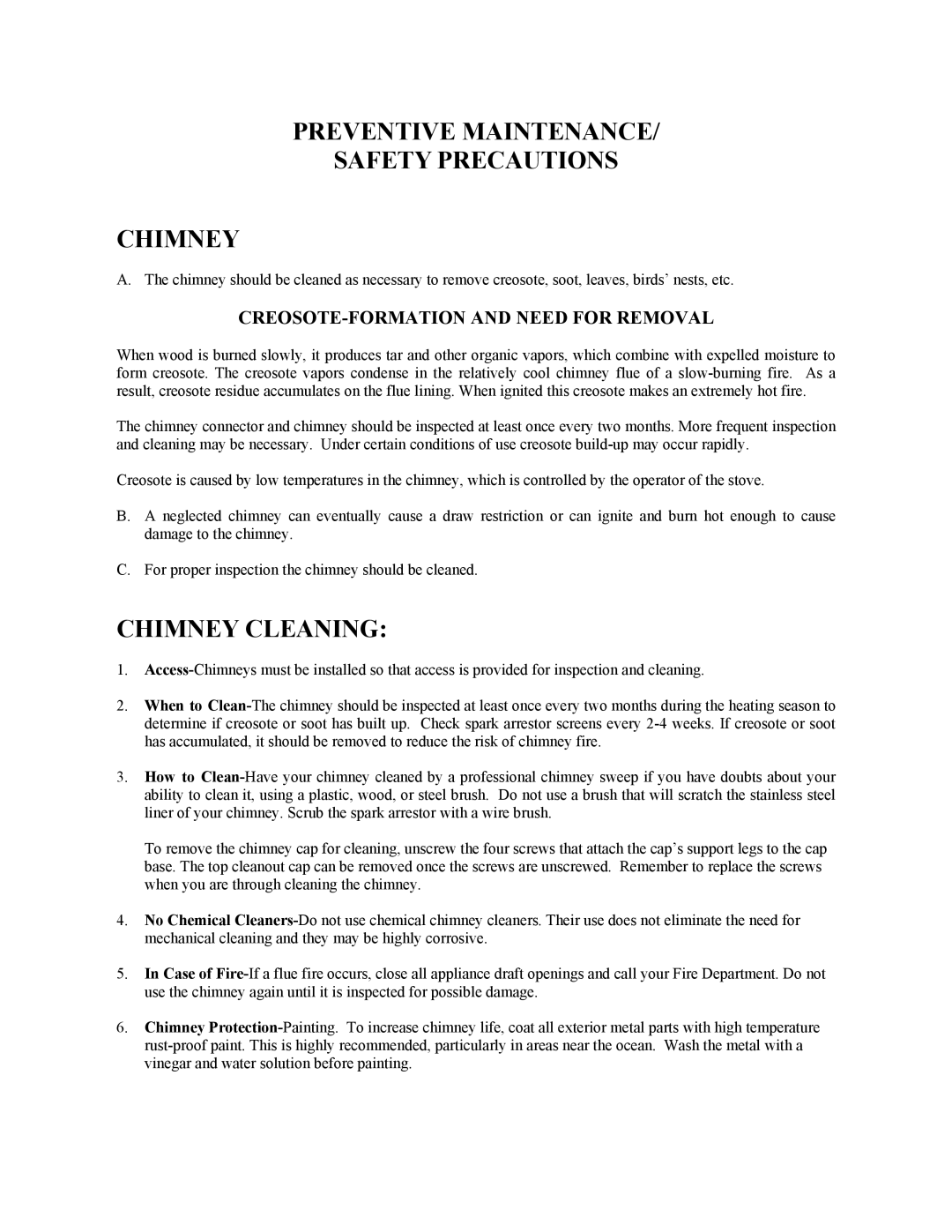PREVENTIVE MAINTENANCE/
SAFETY PRECAUTIONS
CHIMNEY
A. The chimney should be cleaned as necessary to remove creosote, soot, leaves, birds’ nests, etc.
CREOSOTE-FORMATION AND NEED FOR REMOVAL
When wood is burned slowly, it produces tar and other organic vapors, which combine with expelled moisture to form creosote. The creosote vapors condense in the relatively cool chimney flue of a slow-burning fire. As a result, creosote residue accumulates on the flue lining. When ignited this creosote makes an extremely hot fire.
The chimney connector and chimney should be inspected at least once every two months. More frequent inspection and cleaning may be necessary. Under certain conditions of use creosote build-up may occur rapidly.
Creosote is caused by low temperatures in the chimney, which is controlled by the operator of the stove.
B.A neglected chimney can eventually cause a draw restriction or can ignite and burn hot enough to cause damage to the chimney.
C.For proper inspection the chimney should be cleaned.
CHIMNEY CLEANING:
1.Access-Chimneys must be installed so that access is provided for inspection and cleaning.
2.When to Clean-The chimney should be inspected at least once every two months during the heating season to determine if creosote or soot has built up. Check spark arrestor screens every 2-4 weeks. If creosote or soot has accumulated, it should be removed to reduce the risk of chimney fire.
3.How to Clean-Have your chimney cleaned by a professional chimney sweep if you have doubts about your ability to clean it, using a plastic, wood, or steel brush. Do not use a brush that will scratch the stainless steel liner of your chimney. Scrub the spark arrestor with a wire brush.
To remove the chimney cap for cleaning, unscrew the four screws that attach the cap’s support legs to the cap base. The top cleanout cap can be removed once the screws are unscrewed. Remember to replace the screws when you are through cleaning the chimney.
4.No Chemical Cleaners-Do not use chemical chimney cleaners. Their use does not eliminate the need for mechanical cleaning and they may be highly corrosive.
5.In Case of Fire-If a flue fire occurs, close all appliance draft openings and call your Fire Department. Do not use the chimney again until it is inspected for possible damage.
6.Chimney Protection-Painting. To increase chimney life, coat all exterior metal parts with high temperature rust-proof paint. This is highly recommended, particularly in areas near the ocean. Wash the metal with a vinegar and water solution before painting.
